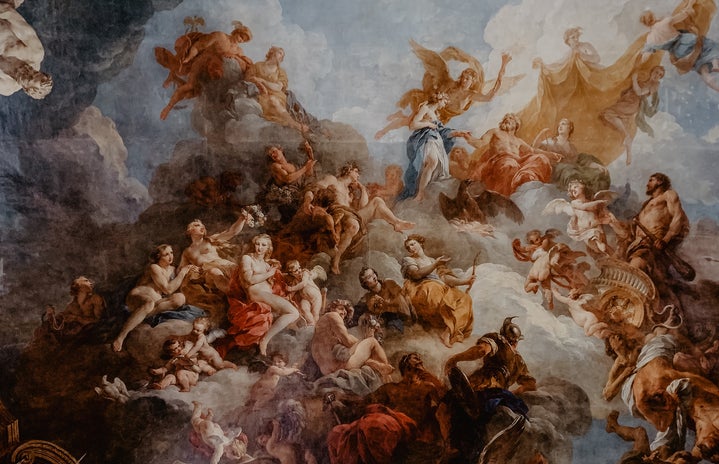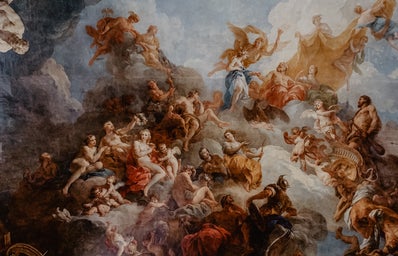Edited by: Ajitesh V.
Imagine you wake up one day feeling lost and wondering if you feel like yourself or whether you want to impersonate your favourite fictional character that brought about your inner rebel or that film protagonist that made you sob so hard. Cottagecore. Strawberry girl. Femme Fatale. Manic Pixie Dream Girl. The options are endless, so feel free to choose your fighter. The concept of ‘aesthetics’ finds its roots in philosophy and relies on romanticisation, immediacy and an overall appeal, which has changed drastically over time. The relevance of aesthetics has always existed, but what has changed is people’s manic obsession with inculcating these aesthetics in their daily lives.
The labelling of aesthetics into numerous categories to suit the “beautifying” needs of people has skyrocketed in the past few years. If you haven’t seen one of those reels of people dressing up like dolls or pretending to be intellectual scholars in a dark academia novel, you’ve been living under a rock (oops!). People have adapted to this rapidly changing internet space, which initially arose from Tumblr and Pinterest. The existence and validity of aesthetics justify and serve as a poignant commentary on the oversaturation of online niches relevant to today’s generation, consumed by fast-paced content creation and production. But behind the scenes of this frenzied fantasy lies deep-rooted issues with “the self”– which reflect an individual’s insecurity and the urge to be somebody else. We have all felt confused during times of chaos and found comfort in altering our authentic selves into somebody else, be it an animated character from Disney or the style of your favourite Kardashian.
The presence of these aesthetics in recurring fashion trends and character tropes compels us to think: are we lost in search of identity, or do we find solace in being a stranger? There is a reason celebrities and influencers all strip off of their natural selves and pretend to play the role of a ballerina or showcase old-money New York chic to keep up with such trends. The reason these aesthetics have not died down yet has more to do with than just the case of popularity and the desperate attempt to avoid the fear of missing out. When faced with an existential crisis (always) or at a turbulent stage in life, people look up to these curated identities as a means to escape. It is easier to look like an already existing curated identity on TikTok than to read a book and relate to a character. Aesthetics stay trendy because they are ready-made, delectable, and consumer-friendly, which appeals to most people, especially teenagers.
Aesthetics alter our sense of individuality. Micro-trends, coupled with the excessive use of social media, make it easily accessible for people to incorporate these aesthetics into their daily lives. It offers them a sense of belonging and familiarity since these aesthetics are closely tied to specific hobbies, styling patterns, and personality traits and give an overall quirky appeal to any individual. One can then think that the relevance of aesthetics correlated to social conformity, which refers to agreeing or conforming to the majority in a specific group and behaving in conventional terms. Friend groups often form based on similarities and preferences, owing to which people stick to their circles. One can observe an alteration in personality by switching from a group of bookworms to a group of musicians. A change in friend groups would bring about temporary covert personality shifts and compel a person to swap between different aesthetics. Celebrities utilize these tactics to stay in trend while also indirectly promoting the usage of such tropes. People can feel pressured into transforming their true selves and converting to an alternate persona to match the styles favoured by others to be more likeable, and this buries the individual’s true personality for the sake of fitting into an aesthetic curated by trendsetters or somebody else.
Media tropes haven’t always been obsessively distressing. The ancient terminology formulated by the Greeks and Romans helps people channel their energy and engage in creative endeavours to cope with boring and monotonous moments in life. However, with the uncontrollable thirst to look for new and exciting content on social media, such aesthetics thrive to insatiate the lack of entertainment people face after a long and strenuous day. The most dangerous aspect of the rising online communities also highlights that people who actively engage and identify with these identities label themselves as artsy and impressionistic. Most of the time, these people do not even identify with their identities and do so for the sake of being more relatable amongst a specific target audience. It comes across as shallow and pretentious behaviour since social media should be a safe platform for people to be themselves without any hindrance or restrictions. The problem with being “that girl” is not restricted to the self but can escalate to overconsumption and capitalistic demands as people prefer to buy clothes from one clothing or beauty brand.
Modern aesthetics have cultivated this internet facade, luring people in by promising them a fun time dressing up and cosplaying. It is crucial to understand that the media is not always an accurate or realistic portrayal of our society, and one cannot always strive to be the cottage-core farm girl pretending to live in the woods. The illusion doesn’t match with our reality, and it’s tiring to keep up with the trends consistently. GenZ’s obsession with media aesthetics and engagement with media must undergo a change in more convalescent ways instead of excessively obsessing over aesthetics and imposing a limit on this built-up internet romanticisation.


